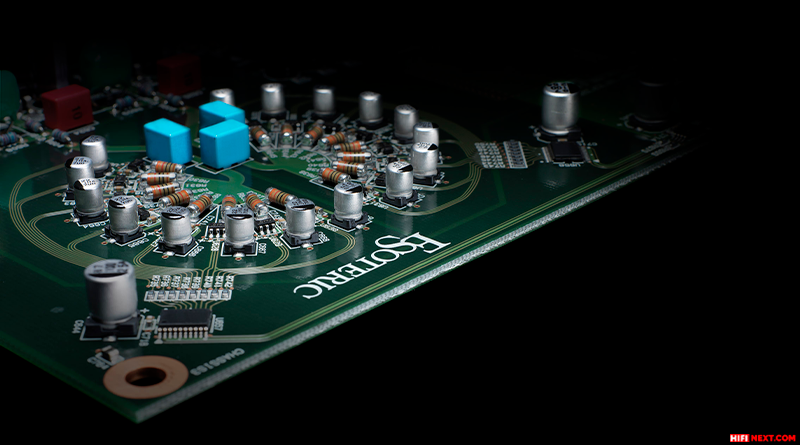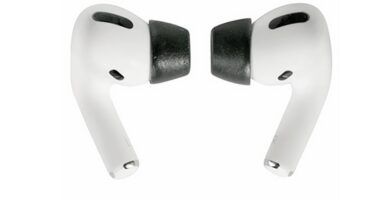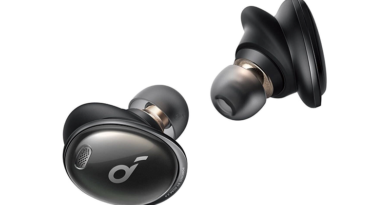Top 10 DACs by Hifinext rating 2021-2022
Digital formats of music playback rule the market of modern audio equipment – the rapid development of streaming services, the emergence of many Hi-Res file stores, the high usability of digital music dictate that almost any modern system is unthinkable without a digital-to-analog converter (DAC). Indeed, it is much easier and more enjoyable to press a button on a streamer and sit back in a chair to enjoy the sound than to use, for example, awkward vinyl (although this is a separate topic for conversation). As of the end of 2021-2022, the DAC market looks very interesting, there are a lot of new products – so we have compiled a consolidated editorial rating of the best DAC of the season 2021-2022.
Contents:
- Musical Fidelity V90 DAC
- SMSL M300 MKⅡ
- Pro-Ject DAC BOX RS
- Teac UD-505-X
- iFi Audio Pro iDSD
- PS Audio DirectStream DAC Junior
- Chord Hugo TT2
- Auralic Vega G2.1
- Pilium Elektra
- Esoteric Grandioso D1X
Musical Fidelity V90 DAC
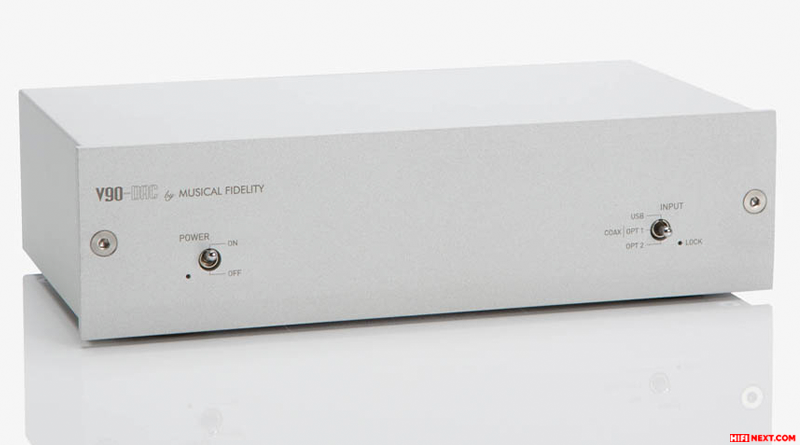
Stylish and inexpensive Musical Fidelity V90 DAC opens the door to the initial Hi-Fi: despite only 600g of weight, the device is designed in a high-quality and perfectly protected from interference case, uses a chip with 32-bit/192kHz parameters and achieves a signal-to-noise ratio in 117dB. The developers managed to bring the jitter to a minimum level – its value is only 12ps, and the THD is 0.004%. The sound of the Musical Fidelity V90 DAC, while not featuring thunderous bass, is characterized by a coherent and engaging presentation.
Price – $379
Musical Fidelity V90 DAC Specifications
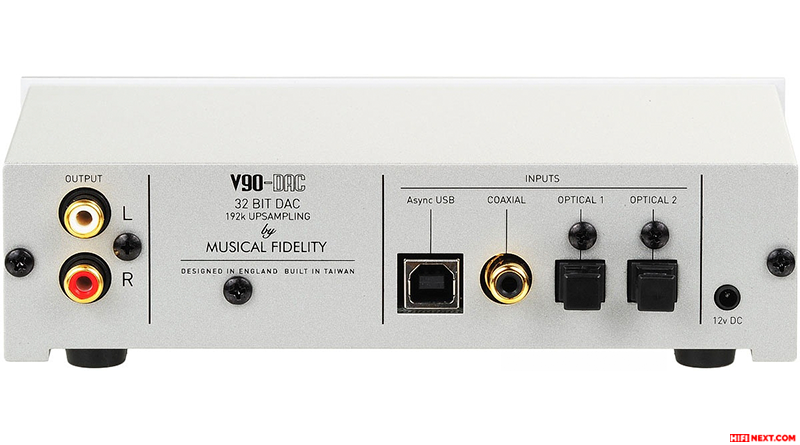
- Jitter: <12 picoseconds peak to peak
- THD(+ noise): <0.004% 20Hz to 20 kHz
- Frequency Response: +0, –0.1dB, 20Hz to 20 kHz
- Crosstalk: -104dB, 20Hz to 20 kHz
- Signal / Noise ratio: -117dB, 20Hz to 20 kHz
- 1x RCA coaxial connector SPDIF 32-bit/192 kHz (16-24 bit stereo PCM)
- 2x TOSLINK optical connector 32-bit/96 kHz (16-24 bit stereo PCM)
- 1x USB type ‘B’ connector – Asynchronous data stream at up to 24-bit/96kHz (Determined by source file/computer settings)
- Output: 1x line level RCA (phono)
- Dimensions – WxHxD (mm): 170 x 47 x 102
- Weight (unpacked / packed): 600g / 1.1 kg
- 1x 12v 500mA DC power supply
SMSL M300 MKⅡ
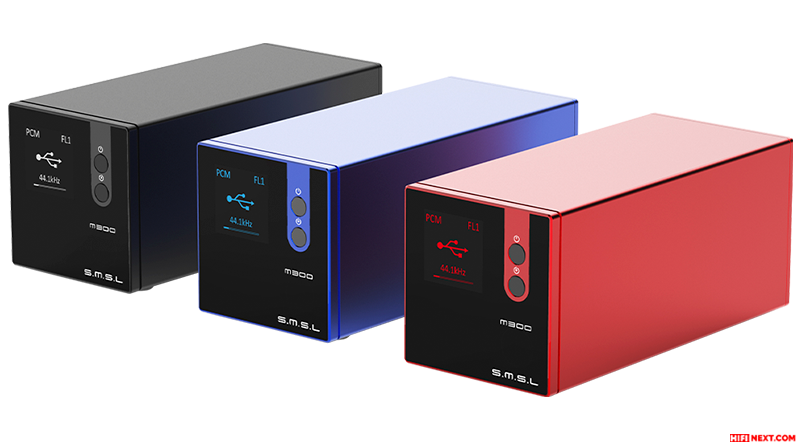
In recent years, Chinese manufacturers are competing with the Western masters on an equal footing in the market of audio equipment – here the SMSL M300 MKⅡ offers significantly more features than you expect from the device of only 7x7x16cm in size.
The device operates a very advanced decoding assembly (together with the chip AK4497EQ operates NDK clock generator and XCore200 Xu208 module), can work with PCM digital stream with parameters up to 32bit/768kHz and provides a dense, large-scale sound – quite atypical for the initial group of components. Also, the second version (MKⅡ) of the SMSL M300 is equipped with a bluetooth 5.0 module with codec support APT-X and SBC codec.
Price – $239
SMSL M300 MKⅡ Specifications
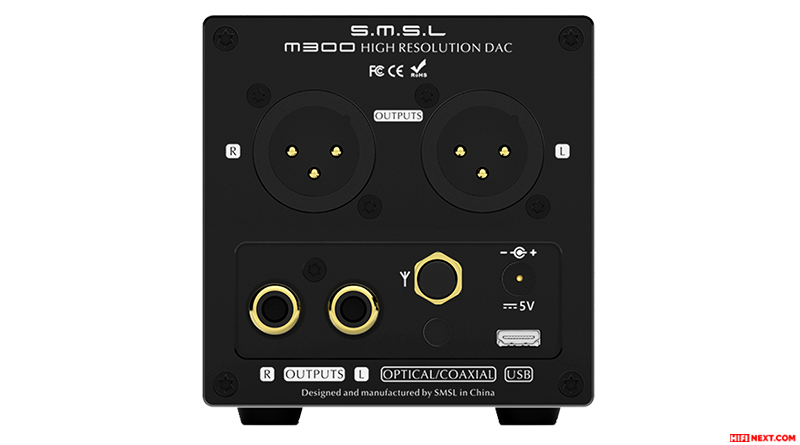
- Inputs – 1x Micro USB XMOS, 1x Bluetooth 5.0 AptX, 1x S/PDIF Coaxial/Toslink via Jack 3,5mm
- Outputs – 1x Single ended RCA, 1x Balanced XLR
- Output level – RCA : 2Vrms, XLR : 4Vrms
- THD+N – 0.0004%
- Dynamic range – RCA : 120dB, XLR : 123dB
- SNR – 116dB
- USB compatibility – Windows 7 / 8 / 8.1 / 10, Mac OSX 10.6 or more, Linux
- Sampling rate/ Bit depth – USB : Up to 32bit 768kHz / DSD512, Optique / Coaxial : Up to 24bit 192kHz
- Consumption – 1.8W
- Standby consumption – < 0.1W
- Dimensions (WxHxD) – 70 x 70 x 160mm
- Weight – 500g
- Power supply delivered – Yes
Pro-Ject DAC BOX RS
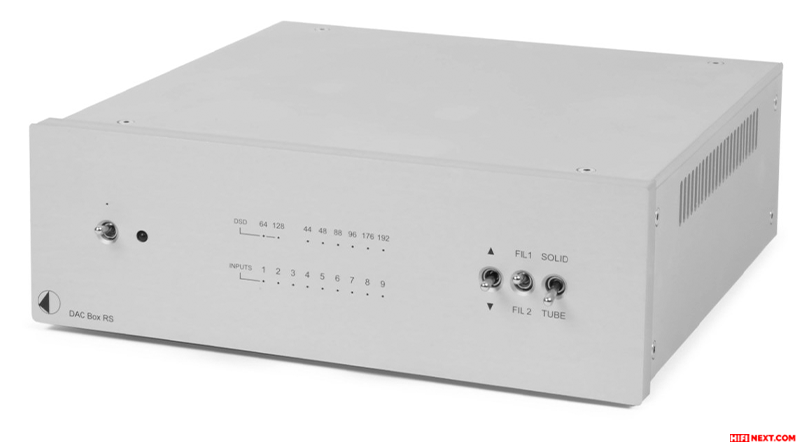
We love the newest Pro-Ject BOX series of audio components – and the Pro-Ject DAC BOX RS is no exception. The DAC uses a pair (one for each channel) of the proven Burr-Brown PCM-1792 chips and has a switchable (6922 EH tube or transistor) output. In addition, even the balanced analog outputs, AES/EBU input and Master Clock input are not forgotten.
Excellent equipment is supported by serious characteristics (frequency response 20-50,000Hz, signal-to-noise ratio – 100dB, THD – 0.005%), and in terms of formats, the device works with PCM streams with a resolution of up to 24bit/192kHz – for this, probably, Pro-Ject DAC BOX RS can be scolded. On the other hand, there is enough air in the sound picture, and on the High Frequency Pro-Ject DAC BOX RS demonstrates real grace.
Price – $1099
Pro-Ject DAC BOX RS Specifications
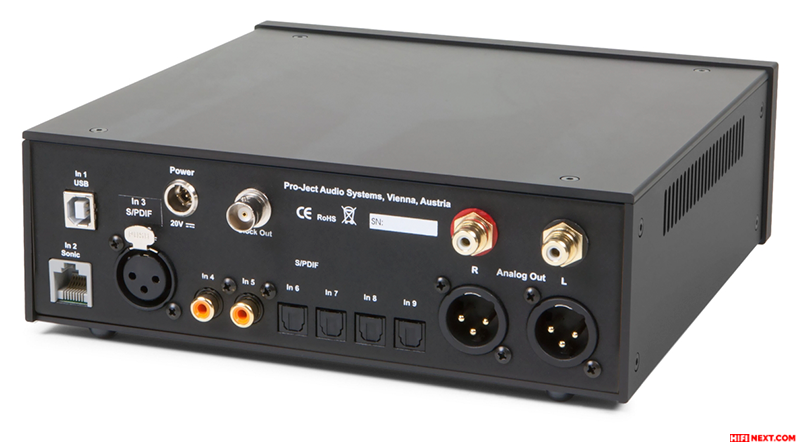
- D/A-converter: 2 x Texas Instruments PCM-1792
- Sampling rates: PCM: 24bit/192kHz / DSD: DSD128 (DoP) / optical: 24bit/96kHz
- Selectable filter settings: „steep“ & „optimum phase“
- Digital inputs: 2 x coax (S/PDIF) / 2 x optical (Toslink®) / 1 x USB B / 1 x AES/EBU / 1 x I²S
- Precision clock output: BNC (use with CD Box RS)
- Frequency response: 20Hz – 50kHz (+0/-1dB)
- Output stages: 6922 tube and solid state (switchable)
- Analogue out: RCA/Cinch & XLR
- Output voltage: max 4V/ 2V (XLR/RCA) at 1k Hz
- THD: 0.005% solid state out / 0.25% tube out
- Signal to noise ratio: 100 dB
- Power consumption: <1 watt standby, 800/300mA max (tube/solid)
- Outboard Power supply: 20V/3A DC (included)
- Dimensions W x H x D: 206 x 72 x 210 mm with sockets
- Weight: 1890g without power supply
Teac UD-505-X
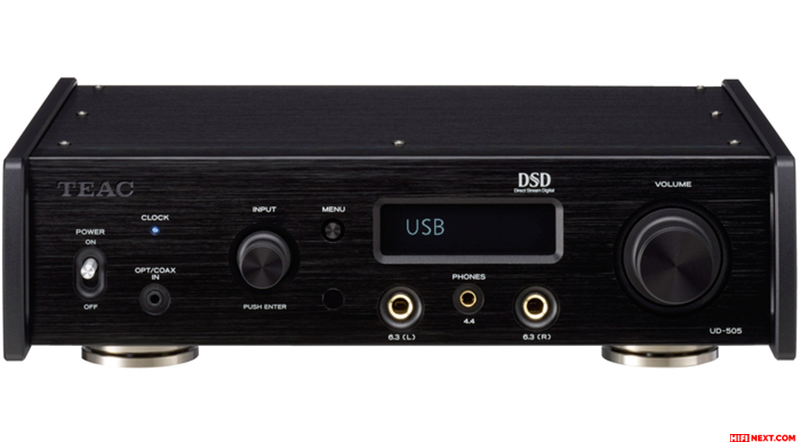
The Teac UD-505-X uses ESS Technology ES9038Q2M audiophile chip in a dual mono configuration. As a result, the device resembles a “Swiss knife” for formats and easily works with DSD512 and PCM 32/768. The characteristics of the Teac UD-505-X are excellent (signal-to-noise ratio – 110dB, THD – 0.002%), onboard there is a Bluetooth interface and a chic headphone amplifier (even with the option of balanced connection), but most impressive the sound of the component.
The Teac UD-505-X shows incredible resolution for this price group, striking outright, both with the texture of the bass and the timbre accuracy of the mid frequencies.
Price – about $1800
Teac UD-505-X Specifications
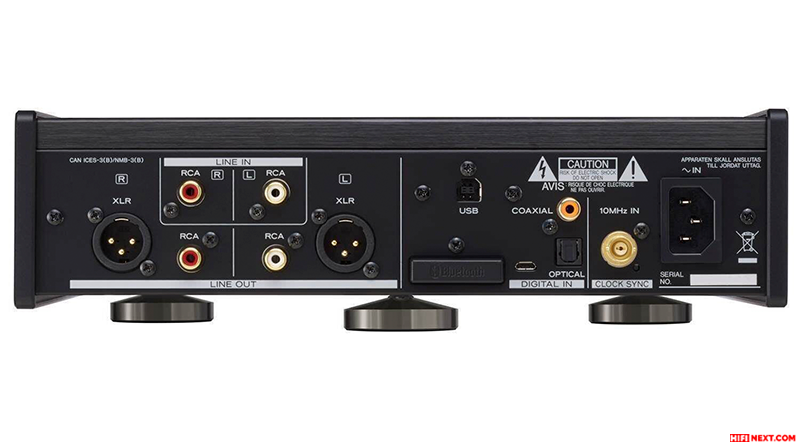
- Supported Formats USB input: PCM: 16/24/32 bit 44.1k/48k/88.2k/96k/176.4k/192k/352.8k/384k/705.6k/768k Hz
- DSD: 2.8M/5.6M/11.2M/22.5M Hz
- Coaxial digital input: PCM: 16/24 bit 32k/44.1k/48k/88.2k/96k/176.4k/192k Hz
- DSD: 2.8MHz(supported with 176.4kHz/24-bit DoP format)
- Optical digital input: PCM: 16/24 bit 32k/44.1k/48k/88.2k/96k/176.4k/192k Hz
- DSD: 2.8MHz(supported with 176.4kHz/24-bit DoP format)
- DAC Section USB DAC: ESS Technology ES9038 Q2M ×2
- Up-conversion: up to 384kHz/32-bit PCM, 24.5MHz DSD
- Audio Inputs USB: USB B port, USB 2.0, asynchronous mode transfer, bulk transfer
- COAXIAL digital (rear): RCA pin ×1 (gold-plated) Input level: 0.5Vp-p Input impedance: 75Ω
- Optical digital (rear): TOS-link ×1 Input level: -24.0 to -14.5dBm peak
- Coaxial digital (front): 1/8″ (3.5mm) mini* ×1 (combined with optical digital input, detected automatically) Input level: 0.5Vp-p Input impedance: 75Ω * 1/8″ Mini – RCA conversion cable included.
- Optical digital (front): 1/8″ Mini Optical*×1 (combined with coaxial digital input, detected automatically) Input level: -24.0 to -14.5dBm peak
- Analog (rear): RCA pin ×1 pair (gold-plated) Input impedance: 24kΩ Input sensitivity: 130mV
- Bluetooth® version: 4.0
- Output class: Class2 (Range: approx. 33ft/10m)
- Supported profiles: A2DP, AVRCP
- Content protection: SCMS-T
- Supported codec: LDAC™, Qualcomm® aptX™ HD, aptX™, AAC, SBC
- No. of paired device: maximum 8 devices
iFi Audio Pro iDSD
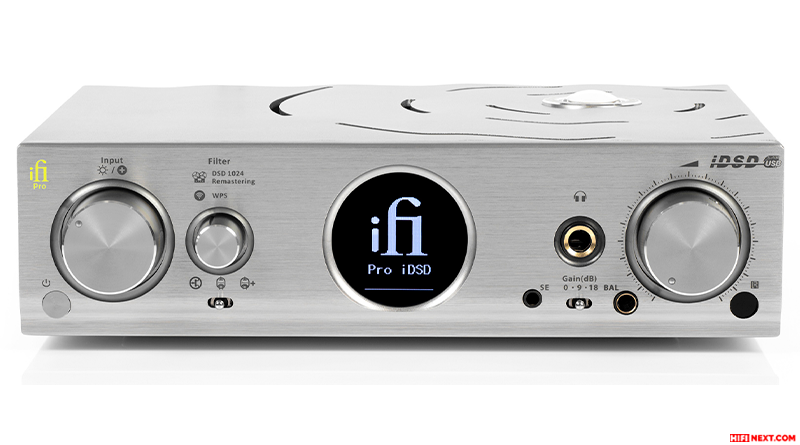
The iFi Audio Pro iDSD circuitry is innovative – the DAC features four Burr-Brown PCM1793 chips included in output voltage mode, an AMR DP-777 clock and a Crysopeia multi-bit FPGA assembly. As a result, the model is guaranteed to handle streams up to DSD1024 and PCM 32/768! The signal-to-noise ratio is a record 147 dB, the dynamic range is 119 dB, and even the USB input based on the XMOS XU216 X-Core 200 chip is obviously overdesigned here.
Regarding the sound of iFi Audio Pro iDSD we can say that finally in this price segment you can get a really live sound clearly superior to any competitor.
Price – about $2749
iFi Audio Pro iDSD Specifications
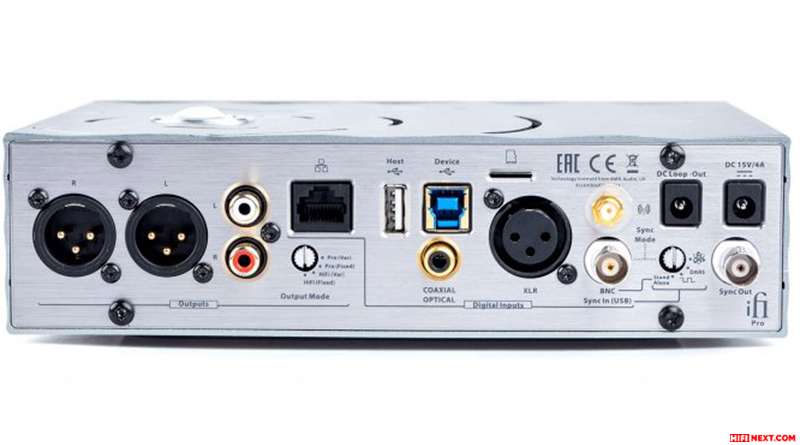
- Sample rates: PCM up to 768kHz DSD up to 49.152MHz (DSD 1024) DXD and double-speed DXD (2xDXD)
- Inputs: USB (required for DSD, DXD and sample rates above 192KHz) AES3 (XLR – single link) S/PDIF (coaxial/optical combo) BNC multifunction (S/PDIF in or sync input)
- Outputs: Balanced XLR at 4.6V (+15.5dBu – HiFi) or 10V (+22dBu – Pro) Single-Ended RCA at 2.3V (HiFi) or 5V (Pro) Headphones 6.3mm & SE 3.5mm Jack at 0.55V/2.1V/5V Headphones BAL 2.5mm/4.4mm Jack at 1.13V/4.6V/10V Headphones out 1,500mW RMS X 2 @ 64 ohm, 4,000mW max. 2 X @ 16 Ohm
- Headphone Output Impedance: Single-Ended (S-BAL): < 1 Ω Balanced: < 2 Ω
- Volume control: Balanced (6-gang) Alps potentiometer, motorised with IR remote control XLR/RCA outputs can be selected as fixed level or adjusted 6.3mm headphone jack is always adjusted
- Other Functions: Various digital and analogue filters can be selected for DSD and PCM up to 384KHz
- PCM Filters: Bitperfect 44.1 – 192kHz, always used for 352.8 – 768kHz Bitperfect + 44.1 – 96kHz Gibbs Transient Optimised 44.1 – 384kHz Apodising 44.1 – 384kHz Transient Aligned 44.1 – 384kHz
- DSD filters: fixed 3rd order analogue filter @ 80kHz with correction for DSD’s -6dB gain
- Gain (headphone section): user-selectable: 0dB, 9dB and 18dB
- Dynamic range: 119dBA (solid-state, PCM, -60dBFS)
- Output power Pro iDSD 4.4mm socket. (16 Ω, balanced/single-ended): >4200mW /1>1,575mW Pro iDSD 2.5mm socket. (16 Ω, balanced/single-ended): >4000mW /1>1,500mW
- Output voltage (600Ω, balanced/single-ended): >11.2V / >5.6V
- Input voltage (Pro iDSD): DC 9V/6.7A – 18V/3.35A
- Input voltage (iPower+): AC 85 – 265V, 50/60Hz
- Power consumption: < 22W idle, 50W max.
- Dimensions: 220 (w) x 213 (d) x 63(h) mm 8.7″ x 8.4″ x 2.5″
- Weight: 1980g (4.37 Ibs)
PS Audio DirectStream DAC Junior
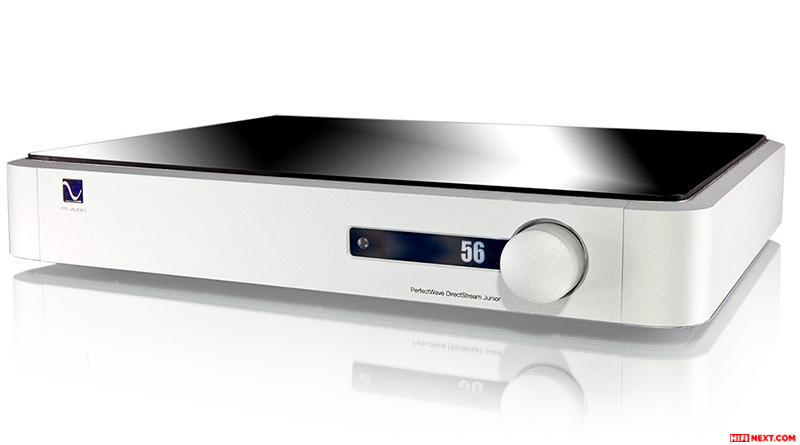
The two years of development that went into PS Audio DirectStream DAC Junior paid off in full – the sound of the device turned out to be very transparent, timbre accurate and almost analogous – not without reason the PS Audio DirectStream DAC Junior has already received a cult status among a number of experts. A “super-stable” clock generator is used here, a set of Spartan FPGAs works, and no complaints can be made about the 8.1 kg case.
The model converts all signals into DSD, reaching the highest 146dB signal-to-noise ratio and not exceeding 0.03% harmonics. The built-in Bridge II streamer, which is fully compatible with Roon, deserves special praise.
Price – $3,999
PS Audio DirectStream DAC Junior Specifications
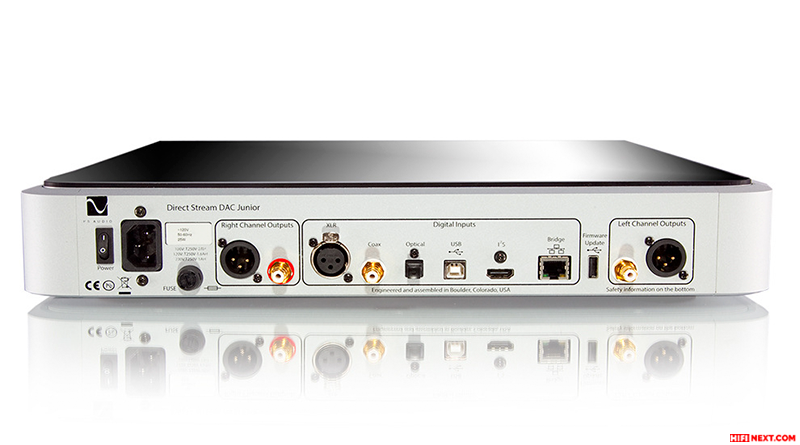
- Digtial audio inputs: I²S, Coax, XLR Balanced, TOSLINK, USB, Ethernet
- Sample Rates:
I²S,S/PDIF, and USB: 44.1kHz to 352.8kHz 16bit, 24bit, DSD 64, DSD 128
TOSLINK: 44.1kHz to 96kHz 16bit, 24bit - Connector: RCA/XLR Unbalanced/Balanced (X2)
- Output level, low: 1.41 Vrms(+5BV)/3.15
- Output level high, maximum: 2.81 Vrms (+8dBV)/5.3 Vrms (+12dBV)
- Output Impedance: 100Ω/200Ω
- Frequency Response: 20-20KHz +/- 0.25dB
- THD+N @ 1KHz (full scale): <0.03%
- Format: PCM or DSD
- Sample rate (PCM): 44.1kHz, 48.0kHz, 88.2kHz, 96.0kHz, 176.4kHz, 192kHz, 352.8kHz
- Word length (PCM): 16b, 18b, 20b, 24b
- Data rate (DSD): Standard (2.8MHz) or Double (5.6MHz) DoP
- Input jitter reduction: Effectively 100%, residual immeasurable. No input PLLs, FLLs.
- Input Processing: 170MHz
- Signal Processing: 50MHz
- Synchronous Upsampling, all inputs: 28.224MHz
- Digital Processing S/N ration: >146 dB
- Digital Volume Control: Zero loss of precision
- Analog Conversion method: Delta Sigma (DSD) Single-bit double rate
- I²S Connector: HDMI
- I²S Format: PCM or DSD. DoP on all inputs as well as raw DSD on I²S inputs
- Connector: USB “B” Type
- Format: PCM or DoP v1.1 (DSD over PCM)
- Transfer mode: Asynchronous
- Input Power: Model specific 100VAC, 120VAC, or 230VAC 50 or 60Hz
- Power Consumption: 30W
- Weight: 18 lbs.
- Dimensions: 14″ x 17″ x 2.75″
Chord Hugo TT2
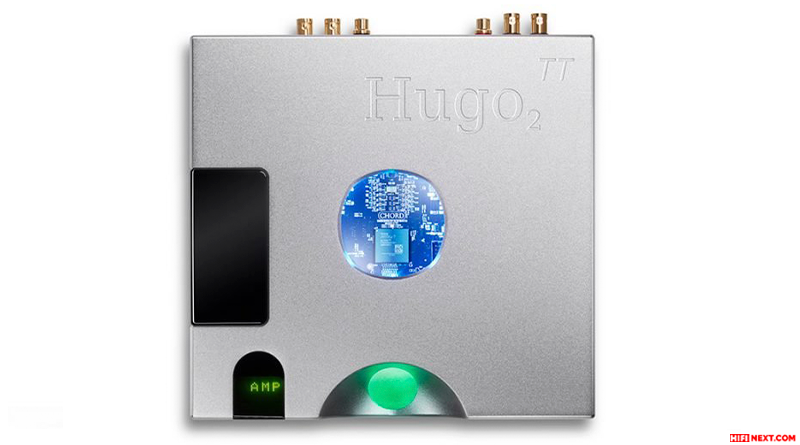
Chord Hugo TT2 looks similar to the previous Hugo model, but under the hood of the DAC everything is radically redesigned. The power of the decoding system has increased fivefold. The heart of the converter, the Xilinx Artix 7 FPGA, consists of 86 cores, each of which runs in parallel at 208MHz. And the signal timing reconstruction filter operates with 16-fold oversampling and an accuracy of 98,304 weighting coefficients – recall that even the Hugo 2 operated 49,152 coefficients.
The output section of the Chord Hugo TT2 is completely discrete, the distortion does not exceed 0.00008%, the channel separation reaches 138dB, and the dynamic range is 127dB. As for the sound, the device grabs the stars from the sky – it demonstrates velvet mids, transparent, “silk” top and amazing mobility of the musical picture.
Price – $5,995
Chord Hugo TT2 Specifications
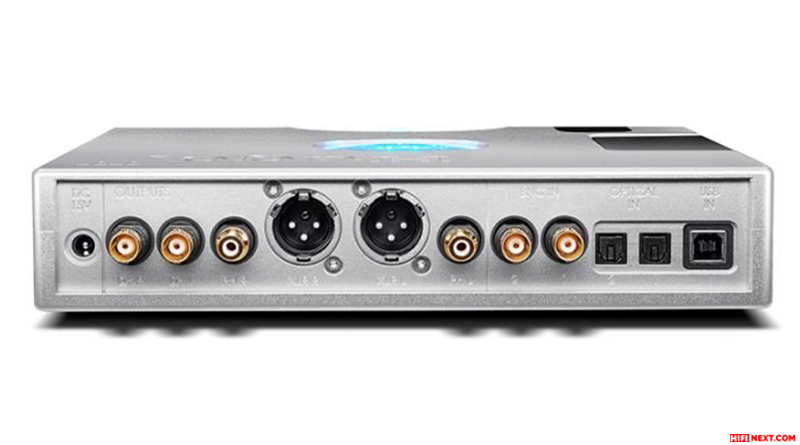
- Tap length filter 93,304-tap 16FS WTA 1 – 10 element design
- Connectivity (input) 1x USB Type-B, 2x DX (expansion inputs), 2x Coax BNC, 2x Optical & Bluetooth
- Connectivity (output) Stereo XLR, Stereo RCA, 2x 6.5mm Headphone jack & 1x 3.5mm Headphone jack
- PCM support 44.1kHz, 48kHz, 88.2kHz, 96kHz, 176.4kHz, 192kHz, 358.8kHz, and 384kHz
- DSD support DSD 64 to DSD 512 – native via Windows
- Volume control Digital
- Line-level mode Activated via dual press of Input and Crossfeed upon startup
- Driver support Driverless with Mac OS X and Linux, driver required for Windows OS
- Dynamic range 127dB ‘A’ weighted
- Noise 4 uV ‘A’ weighted (high gain), 1.7 uV ‘A’ weighted (low gain) with no measurable noise floor modulation
- Distortion 0.00008% @ 2.5 V 300Ω; 0.00016% @ 6 W 8Ω
- Output power (unbalanced) (@1% THD) 288 mW RMS 300Ω; 7.3 W RMS 8Ω
- Output power (balanced) (@1% THD) 1.15 W RMS 300Ω; 18W RMS 8Ω
- Output impedance 0.042Ω
- Stereo separation 9 V RMS 300Ω -138dB
- Dimensions 130mm (L) x 100mm (W) x 21mm (H)
Auralic Vega G2.1
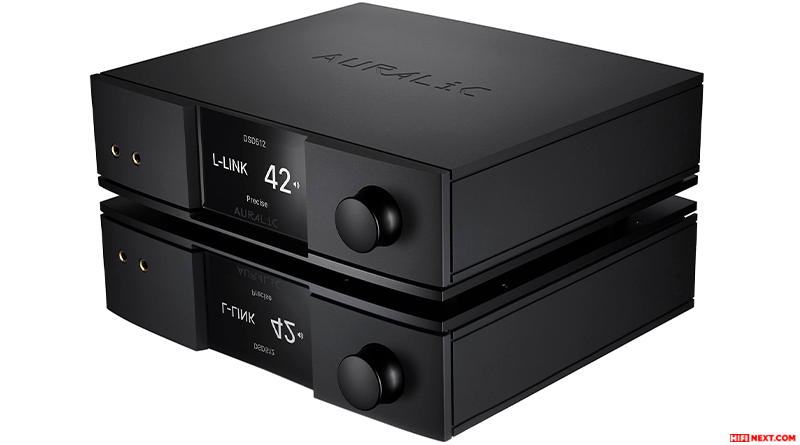
Universal DAC with a streamer – the developers managed to fit in the Auralic VEGA G2.1 case both a converter working with signals up to 32/384 and DSD512, and a streamer over Ethernet, and embed streaming clients TIDAL, Qobuz, Internet Radio, and also guarantee AirPlay and Roon support. In terms of sound, the Auralic Vega G2.1 opens the door to the High End league, striking with microdynamics and brilliance.
Price – $8,599
Auralic Vega G2.1 Specifications
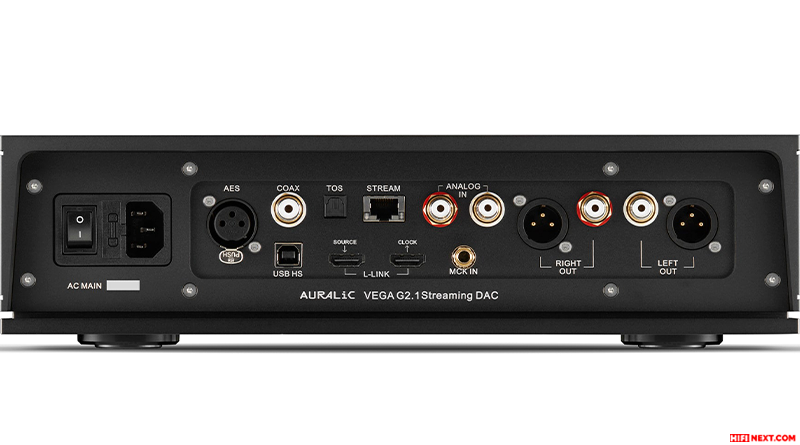
- Frequency Response: 20 – 20KHz, +/- 0.1dB*
- THD+N: < 0.00012% (XLR); < 0.00015% (RCA), 20Hz-20KHz at 0dBFS
- Dynamic Range: 130dB, 20Hz-20KHz, A-weighted
- Lossless: AIFF, ALAC, APE, DIFF, DSF, FLAC, OGG, WAV and WV
- PCM: 44.1KHz to 384KHz in 32Bit**
- DSD: DSD64(2.8224MHz), DSD128(5.6448MHz), DSD256(11.2896MHz), DSD512(22.57892MHz)***
- Digital Inputs: Lightning-Link, AES/EBU, Coaxial, Toslink, USB Audio
- Analog Inputs: RCA Line-stage (2Vrms maximum)
- Streaming Inputs: uPnP/DLNA Media Server, native TIDAL and Qobuz Sublime+ streaming, AirPlay, Spotify Connect, Internet Radio, RoonReady
- Balanced: XLR (4.8Vrms at 0dBFS, output impedance 5ohm)
- Unbalanced: RCA (4.8Vrms at 0dBFS, output impedance 50ohm)
- Headphone: 6.35mm Headphone Jack (output impedance 5ohm)
- Wired: Gigabit Ethernet
- DIMENSIONS – W X D X H 13.4 x 12.6 x 3.7 in. (34cm x 32cm x 9.6cm)
Pilium Elektra
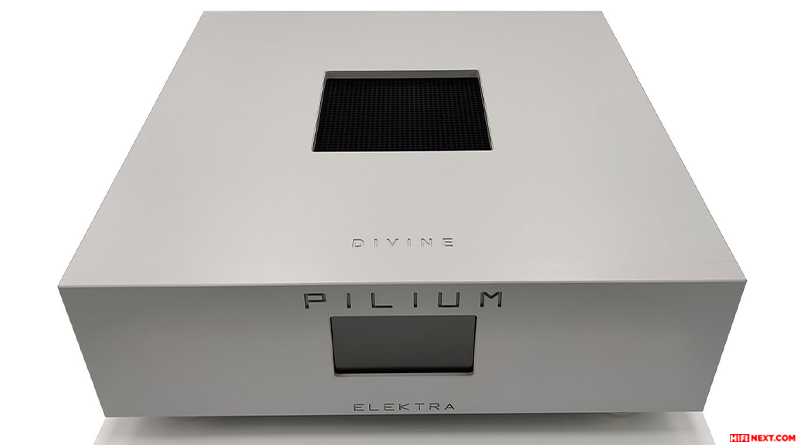
Pilium Elektra provides absolutely analogue presentation of any material, fully justifying its exorbitant price tag. The cosmic sound level, alas, dictates the cosmic price – such is the given Ultra High End of today. Incredible bass resolution, scale that pushes the walls of your hall, it is all really amazing.
The Pilium Elektra operates on the basis of eight AK4493 chips, included in the “dual mono” mode, nine power supplies, a fully discrete class A output stage and is equipped with a proprietary USB module. Signal handling is possible up to DSD512 and PCM 32/768.
Price – £32,000
Pilium Elektra Specifications
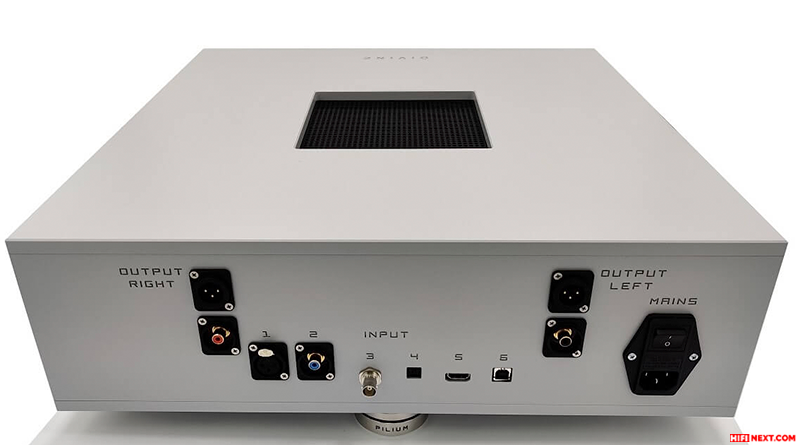
- DACs: 8xAK4493 in Dual Mono
- Digital Inputs: USB, S/PDIF (toslink, bnc, rca), AES/EBU (xlr), Hdmi link (future option)
- Formats: USB: PCM (16-32bit): 44.1-764KHz , DSD: 64/128/256/512 S/PDIF: PCM (16-24bit) 44.1-192KHz (consumer & professional format supported) HDMI: PCM (16-32bit): 44.1-764KHz, DSD: 64/128/256/512
- SE Output Level: 1.99Vrms @ 0dB, 100K load
- Balanced Output Level: 3.97Vrms @ 0dB, 200K load / 3.95Vrms @ 0dB, 10K load
- Analogue Output: Full Discrete
- THD+N: -113 dB typical (20Hz-20KHz, 44.1K@0dBFS)
- THD: -126 dB (1KHz, 48K@-12dBFS, XLR)
- Channel Seperation: >135dB (20Hz-20KHz) @24bit
- SNR: 126dB
- Linearity: ≤115dB
- Display: Touch screen 5.2” LED
- Dimensions: (WxDxH) 480x490x172 mm
Esoteric Grandioso D1X
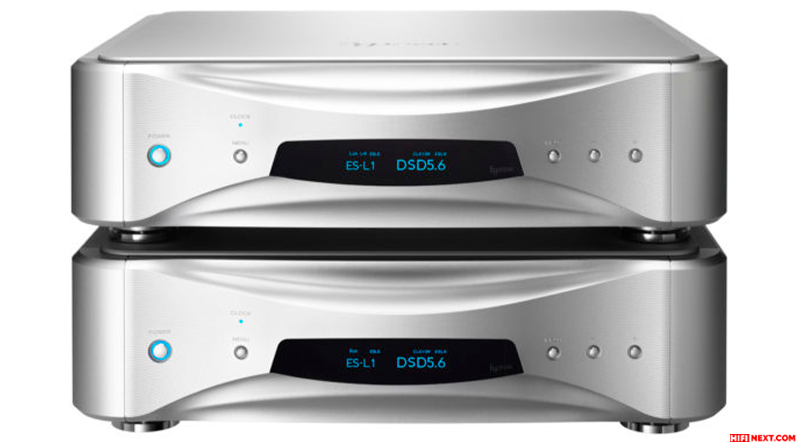
And finally number one in our ranking – the flagship Esoteric Grandioso D1X is a one-piece DAC with Master Sound Discret technology reaching 64-bit resolution. The device works with PCM signals up to 32/768, uses four huge toroidal transformers and proprietary Electric Double-Layer Capacitor, and weighs 46kg.
With a signal-to-noise ratio of 113dB, THD is 0.0007%, and the sound of the model can be said to be truly fantastic. The Esoteric Grandioso D1X handles all genres with one-left and provides a full-fledged musician presence in your home.
Price – $50,000
Esoteric Grandioso D1X Specifications
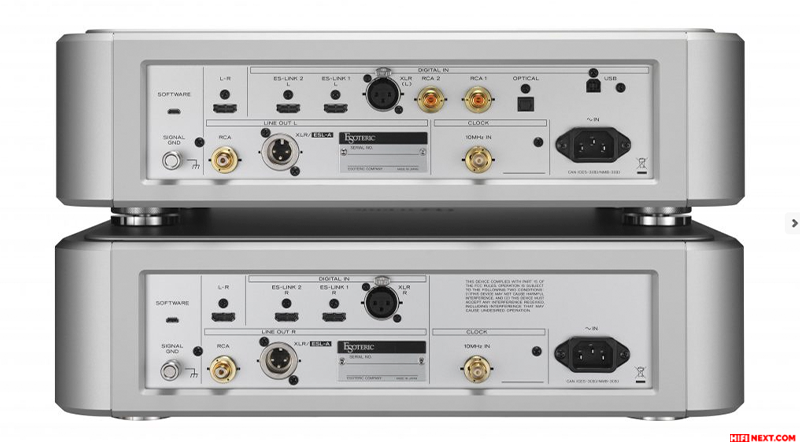
- Digital audio inputs:
- ES-LINK 2
- Input signal formats Linear PCM (ES-LINK5 format) 44.1k to 768kHz 48bit DSD (ES-LINK5 format) 2.8MHz, 5.6MHz, 11.2MHz, 22.5MHz
- XLR 1
- Input level 5.0Vp-p
- Input impedance 110Ω
- Input signal formats (DUAL connection) Linear PCM (DUAL AES format) 88.2k to 384kHz, 16bit to 24bit Linear PCM (ES-LINK3 format) 88.2k to 192kHz, 48bit DSD (ES-LINK1, ES-LINK2, DoP format) 2.8MHz
- Input signal formats (SINGLE connection) Linear PCM (AES/EBU format) 32k to 192kHz, 16bit to 24bit DSD (ES-LINK1, ES-LINK2, DoP format) 2.8MHz
- RCA 2
- Input level 0.5Vp-p
- Input impedance 75Ω
- Input signal formats Linear PCM (IEC60958 format) 32k to 192kHz, 16bit to 24bit DSD (DoP format) 2.8MHzt
- OPTICAL 1
- Input level –24.0 to –14.5dBm peak
- Input signal formats Linear PCM (IEC60958 format) 32k to 192kHz, 16bit to 24bit DSD (DoP format) 2.8MHzt
- USB 1 (USB2.0 standatd)
- Input signal formats Linear PCM 44.1k to768kHz, 16bit to 32bit DSD 2.8MHz, 5.6MHz, 11.2MHz, 22.5MHz
- Analog audio outputs:
- XLR/ESL-A x 1 (mono) each for left and right channels
- Output impedance 100Ω
- Maximum outout level 5.0Vrms (1kHz, full scale PCM signal input, 10kΩ loaded)
- RCA x 1 (mono) each for left and right channels
- Output impedance 47Ω
- Maximum output level 2.5Vrms (1kHz, full scale PCM signal input 10kΩ loaded)
- BNC x 1 each for left and right channels
- Input impedance 50Ω
- Input level Sine wave 0.5 to 1.0Vrms
- Frequency that can be input 10MHz (±10ppm)
- Power supply AC 220 to 240V. 50/60Hz AC 120V. 60Hz AC 220V. 60Hz AC 230V. 50Hz
- Power consumption 20W
- External dimensions (W×H×D) 445 × 132 × 448mm 17-⅝ » × 5-¼ » × 17-¾ » (including protrusions)
- Weight Left channel 23.1kg / 51 lb Right channel 23.0kg / 51-¾ lb

